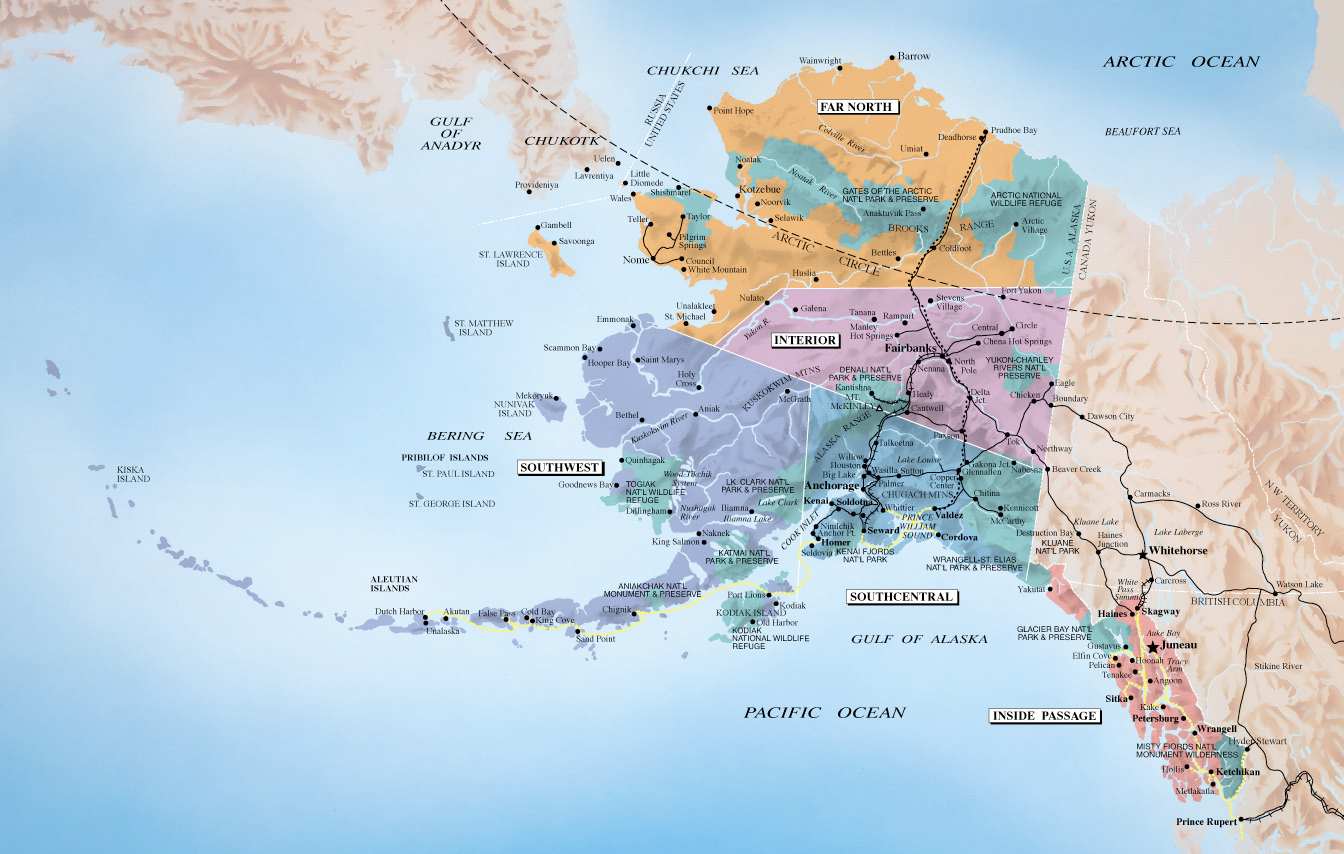The Angel Rock Trail is interlaced with talus that has fallen away from larger rocks all along the hike, as well as several areas of core stones that have built up into tors. The weathering of theses rocks has created a unique environment that has become known for being a scenic and enjoyable trail to hike.
Caption: This is Angel Rock, the trail is cut in between these rocks all the way to the top of the mountain.
Based on the climate of the area in Alaska many of these rock formations may have been split during the winter due to frost weathering. This would have occurred when the crevices of the rock filled up with water, then froze, thus expanding and separating the joints of the rock.
Caption: You can see the joints in this large rock, as well as other rocks in the foreground of the picture that could be core rocks that have weathered away at a faster rate than the larger forms in the background.
Caption: There is also plant growth in the joints of the rocks (which is only slightly visible here), the roots could also be applying the pressure that has caused the joints to expand and break, in addition to the frost weathering that occurs during the colder times of the year.
The talus of the area has even accumulated into talus cones on a nearby hillside:
As shown by this picture the environment is scenic and has also developed into a home for the animals near Angel Rock, just anthoer reason people have come to enjoy spending their time in this area.
Image Sources in order of appearance:
-Photo taken by Curtis Stuck.
-http://lh3.ggpht.com/_N6yZMKlobEg/TKQCTIKzEOE/AAAAAAAAKNg/JUtED--7y4Yc/AngelRockHike2010.jpg
-Photo taken by Curtis Stuck.






 '
'





